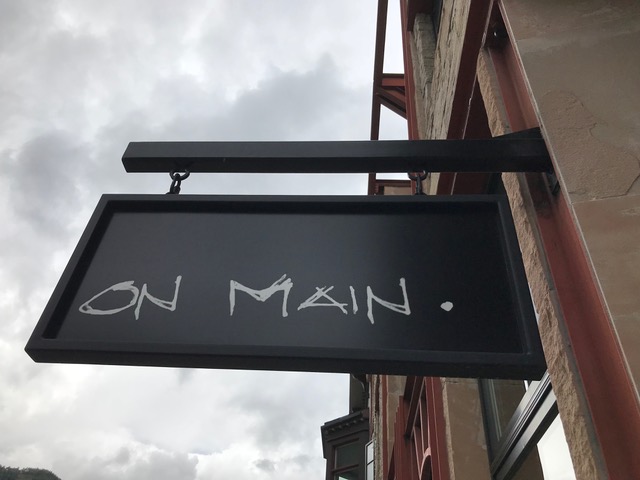
17 Dec ON MAIN Reopens with “HANDMADE,” 12/20
It’s all about altitude – with attitude.
Two long-time Telluride locals and internationally renowned tastemakers, Ellen Geldbaugh and Catherine Walsh, conceived of ON MAIN as a collaborative space dedicated to fine art and the art of living well. The goal of their venue is to push the cultural envelope in town by bringing progressive art experiences to the Telluride region and beyond.
Geldbaugh and Walsh’s third joint venture, “HANDMADE,” features the paintings of reductivist Hadi Tabatabai and the sustainable fashions of Jasmine Aaron’s VOZ. Cut flowers by Ella Hassan complete the minimal beauty of the show and the space.
“HANDMADE”: where less is a whole lot more. Opens December 20 and runs through February at 359 East Colorado Avenue, Telluride.
Please scroll down to listen to our conversation with Jasmine Aaron.
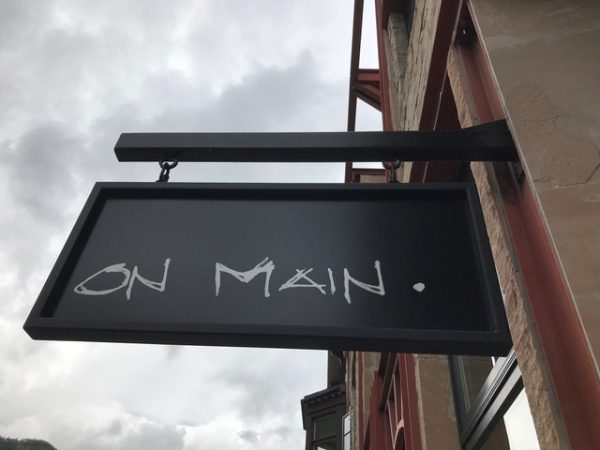
Thread: a cotton, nylon, or other fiber used in sewing or weaving.
Threads: a colloquial term for clothing.
Both ideas tie neatly together when ON MAIN, the pop-up gallery space, reopens for business on Thursday, December 20, with “HANDMADE.”
The signature of ON MAIN is, in the words of its founders, “progressive art experiences.” But how exactly does that idea translate?
The first show in the space, mounted in August 2017, paid “edgy” forward by showcasing the sensuous, pictorially forceful 3D paintings of Brooklyn-based artist Jarrod Beck, who used materials found in Telluride as vehicles to deliver a message about place and history.
The duo’s second show, mounted one year later in August 2018, featured another Brooklyn-based talent, Matt Kleberg. His paintings of abstracted passages in the form of warped prosceniums and archways are intensely engaging, decorative images that walk a tightrope between architectural volume and painterly flatness.
Both Beck and Kleberg – and their patrons, Geldbaugh and Walsh – are clearly in alignment with the precept adopted from literature (in 1947) by architect Ludwig Mies van der Rohe: “Less is more.”
“HANDMADE” is all about minimalist design for maximum impact in art – and, in this case, in fashion (and florals) too.
“HANDMADE” merges the work of Iranian born, San Francisco-based artist Hadi Tabatabai with southern Chilean textiles created by artisans in Jasmine Aarons’ company, VOZ: wraps and ponchos (signed by the indigenous makers), plus silk blouses, camis, dresses, jumpsuits, jackets and more. The quiet beauty and understated elegance of the work of both artist and designer are tastefully set off by the graceful flower arrangements of Ella Hassan.
Born in Mashhad, Iran, in 1964, Hadi Tabatabai immigrated to the United States in 1977, settling with his family in California. Tabatabai went on to receive a BS in industrial technology from California State University Fresno in 1985 and a BFA in painting from the San Francisco Art Institute in 1995.
Tabatabai’s work has been on display in London, Turin, Bonn, and widely in the United States. He has had solo exhibitions at the Anthony Grant Gallery in New York; Brian Gross Fine Art and Stephen Wirtz Gallery in San Francisco; and Inde/Jacobs in Marfa, Texas. His works are included in the collections of The Achenbach Foundation at the Fine Arts Museums of San Francisco; the Delaware Art Museum; The Contemporary Museum (Honolulu, Hawaii); the Colby College Museum of Art (Waterville, Maine); The Lannan Foundation; The Progressive Corporation Art Collection; and the Werner H. Kramarsky Collection.
In Tabatabai’s delicate, yet emotionally compelling Thread Paintings, each piece is patiently constructed, threaded and painted by hand, with the artist excising narrative and figuration and figure and ground from his combinations of squares, rectangles and floating lines, revealing the ethos of an extreme reducer. Like Mondrian’s famous grids and Malevich’s Suprematist black squares and crosses, the Tabatabai’s apparent desire to strip his work down to its barest nature reveals the great communicative power of studied austerity.

Tabatabai summed up his end game in one interview as an attempt to create a space “where we all arrive in our quest for understanding the self, and the self’s relationship with the infinite,” adding:
“My artwork is a combination of drawing, painting and sculpture that describes a place that is as much an idea as a physical location. The compositions embody liminality; that is, they create a constant experience of sensations that exist at the limen, or edge of perception. To bring about this state, I have removed all possible distractions…
“I work with a variety of materials, such as slate, wood, thread and wax, in addition to paint, to produce a ‘painting’ with a sculptural, three-dimensional quality. For almost two decades, I have devoted my attention to a very tiny area—an area that comprises the physicality of a line and functions as the transitional space between two entities. I view the ‘line’ as empty space without an agenda or allegiance; it is neither here nor there. I have found that by paying attention to this tiny, subtle, yet detailed space, one is forced to turn away from the outside world and focus inward on one’s own interior space.”
And, like another famous minimalist Agnes Martin did before him, Tabatabai determines both the scale and shape of his pieces through an intuitive process.
In their own quiet way then Tabatabai’s paintings function like mandalas, helping us to quiet the noise in our monkey minds, to focus and really pay attention. Like artist James Turrell, he creates a situation that requires his viewers to look at something long enough and hard enough to really perceive, not just see, what’s in front of their eyes. There is also an element of Ad Reinhardt’s insistent purity in Tabatabai’s work: “art is art-as-art and everything else is everything else.”

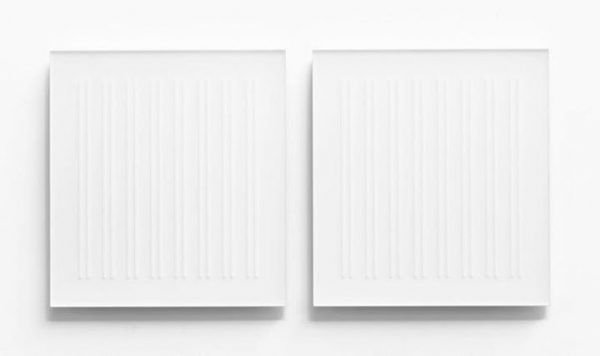
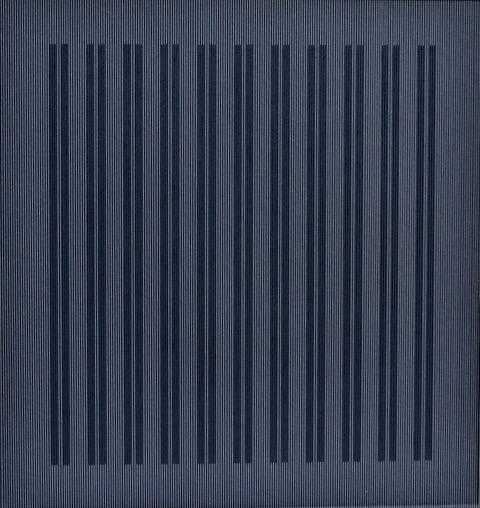
As a boy, Tabatabai was interested in studying architecture, but fate – the fact his family had to emigrate to the United States from Iran when he was 13 – led to a degree in construction management instead. The artist’s recent work suggests, however, he is still thinks about one of architecture’s primary concerns: back to less is a whole lot more.
“There is a quiet sophistication to the work that really spoke to us,” said Walsh, “where less is obviously not just more, but frankly a sacred act.
Tabatabai’s other works on paper and acrylic pieces will also be featured at ON MAIN.
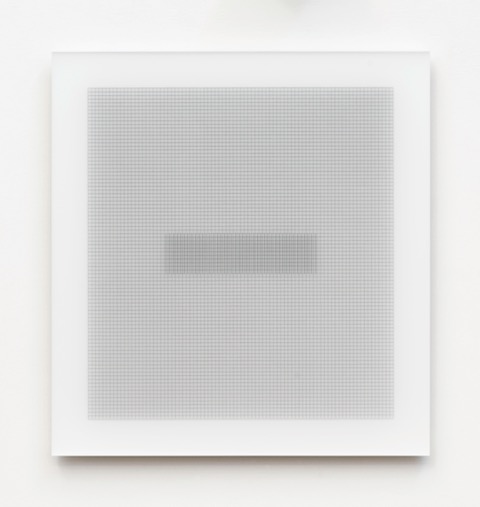
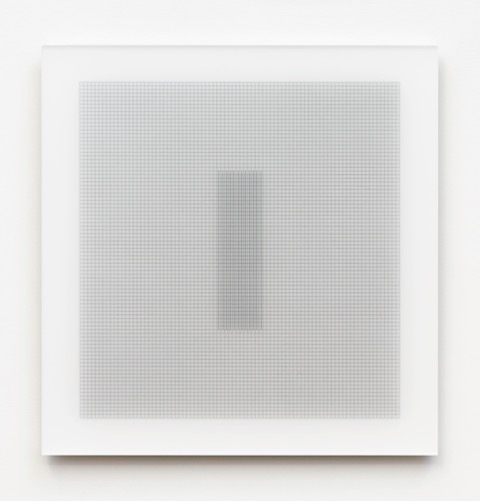
The pristine rigor of Tabatabai’s aesthetic and the resulting minimalist elegance also show up in Aaron’s quietly rich VOZ designs, created in large part by Mapuche artisans from southern Chile.
The Mapuche people are the largest ethnic group in Chile and constitute approximately 10% (more than 1,000,000 people) of the Chilean population. But they are vulnerable because in a class-conscious society, Mapuche sit on the lowest rung of the social ladder.
Such repression is nothing new. All through history, the State and the Church have executed strategies to assimilate the Mapuches into Chilean society. During the Pinochet era, Mapuche lands were privatized and, to a large extent, sold to wealthy landlords and foreigners. Pinochet also introduced new laws, which declared that there were “no indigenous people in Chile, only Chileans.” The loss of a large quantity of their land resulted in migration to the big cities. And Mapuches who move to the cities soon forget their culture in order to be able to claim a place in society.
Still today Mapuche face difficulties getting jobs and, when they do, they are paid way less than their Chilean colleagues.
Aaron’s VOZ – VOZ is the Spanish word for “voice” – is working to help turn that situation around.

VOZ artisans from Mapuche community.
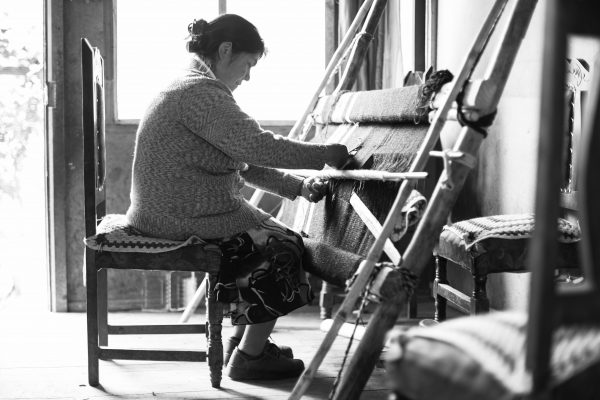

Founded in 2012 as an ethical, luxury fashion enterprise, the goal of VOZ is to protect the livelihoods, well-being and cultures of rural indigenous women in southern Chile and soon, in other parts of the world. The company’s’ primary rural artisan education center is located in Temuco, Chile. Currently over 100 artisans are employed through VOZ’s supply chain, which offers everyone 3x the local average wage and a healthy working environment tailored to the needs of rural-dwelling mothers- weavers-knitters. Operations are scheduled to also include Puno artisans in Peru; Tangail weavers in India; and expert seamstresses in New York.
Ultimately, then, VOZ is a platform for cultural preservation which allows indigenous elders to share their knowledge and technical abilities with their natural heirs to ensure continuity of ancient art forms and trades across generations by providing entry into the conventional economy. The company also makes sure to credit its artisans by name in its look-books and on hangtags.
Bottom line: the VOZ model honors and empowers indigenous artisans creatively, financially and culturally through the sort of collaboration that showcases, preserves, and supports traditional art forms. Throughout the US and now online, VOZ has effectively spearheaded a fashion movement based on handmade products and fair trade compensation.
For the Telluride show, ON MAIN secured a wide selection of VOZ’s hand-woven textiles and other items from the line that evoke the casual elegance of Telluride chic:
“There’s nothing fussy or pretentious about VOZ,” says Geldbaugh, “just beautifully handmade pieces that are simple, chic and comfortable.”
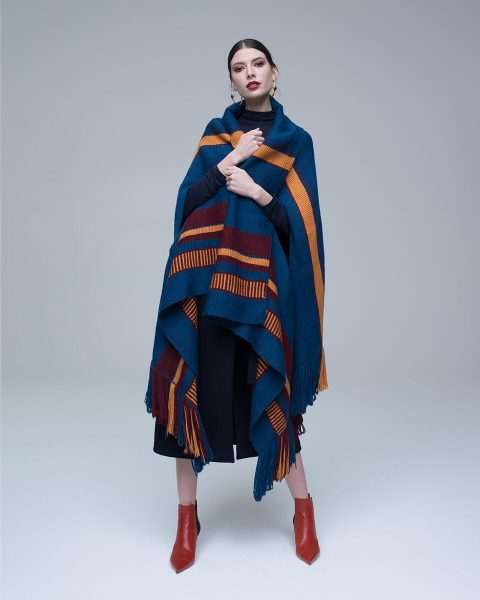
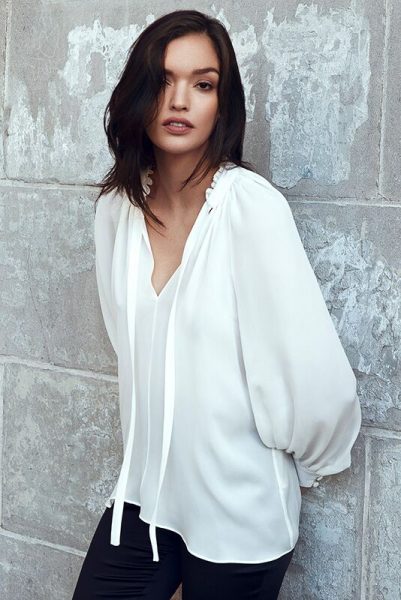

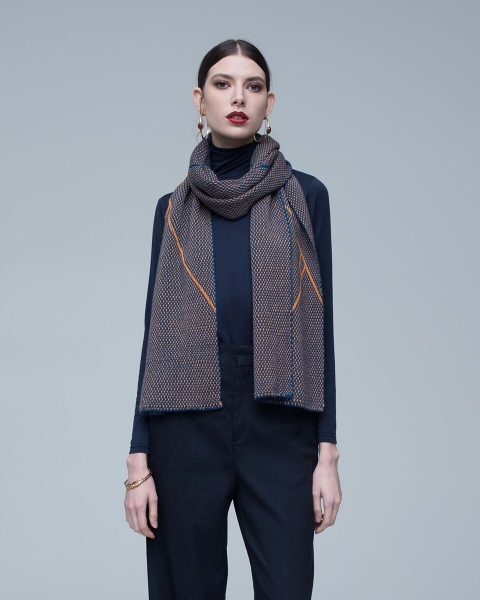
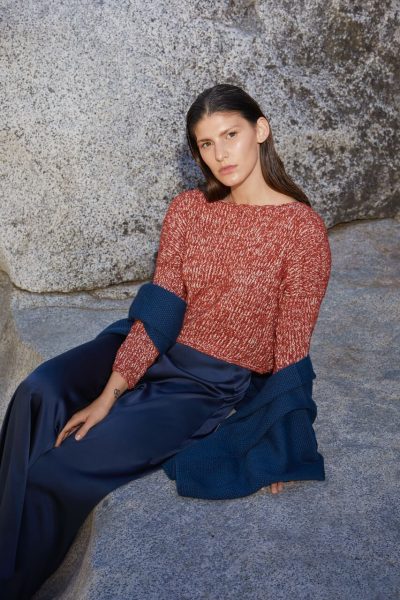
Before the creation of VOZ, Aarons excelled in mechanical engineering and product design. The experiences of the Stanford graduate in Silicon Valley fueled her belief that greater integration of sustainable methods of design and production were – and are – needed throughout the world.
Aaron’s hope is that by scaling VOZ globally, mobilizing a web of talented women (and men) and incorporating the lessons of indigenous craft, the resulting sustainable, ethical product designs can help solve the many negative consequences of global mass consumerism. That belief is now the ethos of VOZ, where Aaron continues to steer the company’s creative vision, product development and international operations. In that role, she plans to continue researching and executing ecological means of creating an ongoing design history to provides continuous work opportunities for her weavers, knitters and sewers.
Amen.
For more on her life and work with VOZ, please check out our conversation with Jasmine Aaron.
https://soundcloud.com/telluride-inside/jasmine-aarons
More about Ella Hassan and her flowers:


About Geldbaugh and Walsh of ON MAIN:
Ellen Geldbaugh is an architect who has worked in both exterior and interior design nationally. She has had a presence in Telluride for 25+ years.
Catherine Walsh, an international beauty/fashion consultant, art enthusiast and trend-setter, is on the board of trustees of the Chinati Foundation in Marfa, Texas, the VIA Art Fund and Spack NK, London. Walsh lives part-time in Telluride.


BARBARA WALKER
Posted at 11:40h, 18 DecemberSusan Viebrock.. your article recognizing ON MAIN and podcast is much appreciated. Well Done!!
ON MAIN is bringing impressive new ideas of art to the forefront. VOZ clothing makes my feminine inner spirit soar and I would not have known about this amazing company if it were not for ON MAIN.
Textiles have been a love of my life, both as an interior designer but one who has lived and written about Bali, Cambodia, Vietnam and Laos. I was drawn to these countries due to their fabulous fabrics and design.
Now I add VOZ to this group of amazing “threads” and use in fashion.
THANK YOU, Ellen Geldbaugh and Catherine Walsh for your endeavors to bring new ideas in art through your ON MAIN presence.
Barbara Walker
walkerdesigns@hotmail.com
Fort Lauderdale, Florida 33315
Lary Simpson
Posted at 14:57h, 13 JanuaryHaving just returned to Telluride after an extended visit to the coast of Connecticut and seeing our grand daughters, both Sally and loved you observation about Ellen’s pop up Gallery on Main. A much needed addition to Telluride.
Susan Viebrock
Posted at 15:42h, 13 JanuaryThanks for weighing in Lary. I agree with you about Ellen and Catherine. We are fortunate to have women of their taste, talent and tenacity in our community.